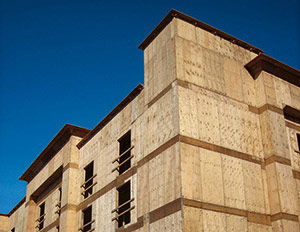 Plywood Basics
Plywood Basics
Plywood has been one of the most recognized and trusted wood building products for decades. Manufactured from thin sheets of cross-laminated veneer and bonded under heat and pressure with strong adhesives, plywood panels have superior dimensional stability and an excellent strength-to-weight ratio and are highly resistant to impacts, chemicals, and changes in environmental temperature and humidity. Plywood manufactured by APA member mills is available in a wide variety of appearance grades, ranging from smooth, natural surfaces suitable for finish work to more economical grades used for sheathing. With more than a dozen common thicknesses and over twenty different grades.
it is the cache of strength. Every piece of plywood is made of plantation timber. The fresh logs are hydraulically peeled to get the exact thickness and smoothness. The moisture of veneers is brought up to 7% and press dried for flatness. Finally they are chopped straight for composing section.
While Melamine fortified Urea Formaldehyde Resin is used to provide moisture resistant bond to MR Grade plywood, Phenol Formaldehyde is used for the bonding of BWR grade plywood. Every inch of then range is chemically treated against any attack of borer and fungus.Common Plywood Applications
plywood is suitable for a variety of end uses including subflooring, single-layer flooring, wall and roof sheathing, sheathing ceiling/deck, structural insulated panels, marine applications, siding, webs of wood I-joists, concrete forming, pallets, industrial containers, mezzanine decks, and furniture.
Panel Performance Categories
5/16, 3/8, 15/32, 1/2, 19/32, 5/8, 23/32, 3/4, 7/8, 1, 1-1/8.
Panel Sizes
4' x 8', 4' x 9', 4' x 10'
| Tests | Observed Values |
| Moisture Content | 6-8% |
| Glue Shear Strength(N) a) Dry State b) Wet State c) Mycological | MR 1200 MR 1000 MR 1000 |
| Specific Gravity | 0.7 to 0.75 |
| Swelling in Water | Less than 1% |
